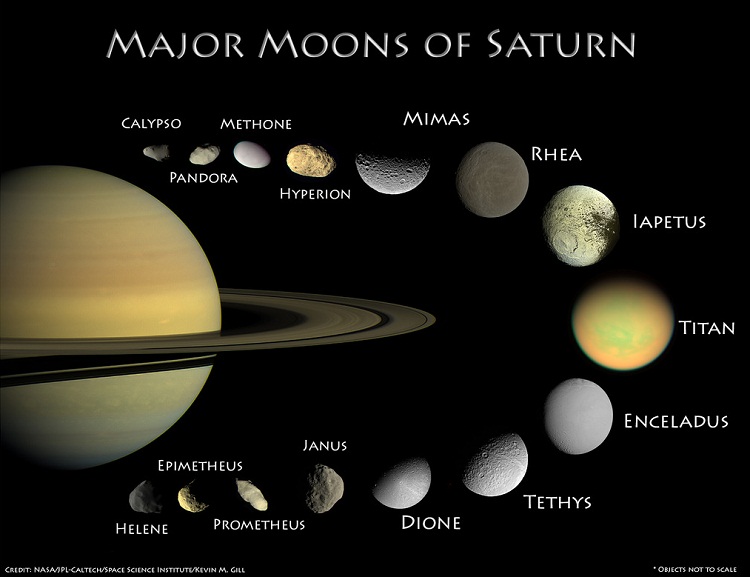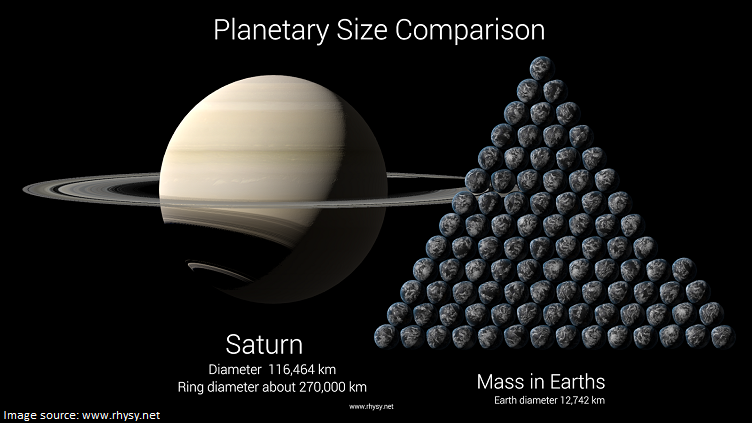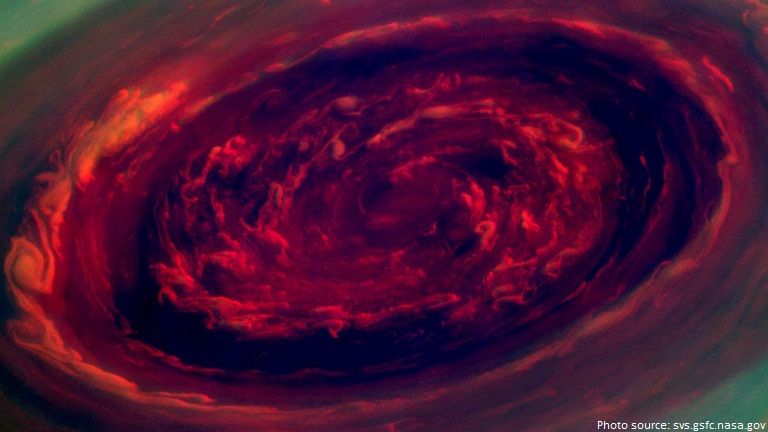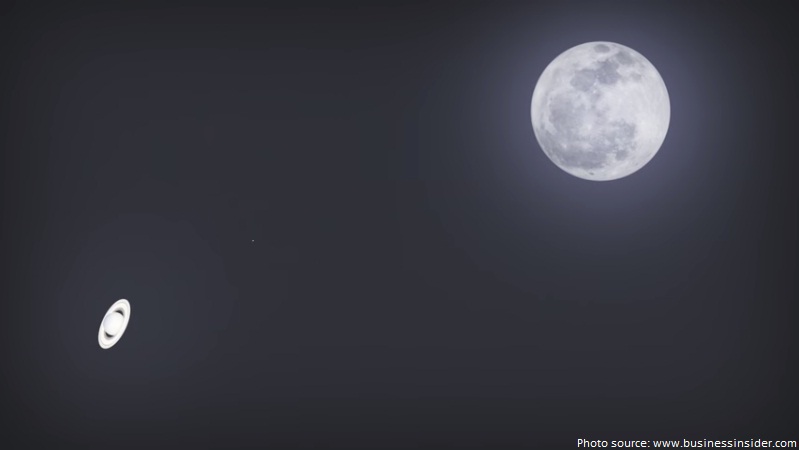Saturn is the sixth planet from the Sun and the most distant that can be seen with the naked eye.
Many astronomers consider Saturn the most beautiful planet in the solar system because of its stunning rings. In fact, Saturn’s nickname is “the jewel of the solar system“.
Only Jupiter has more moons (63) than Saturn (61), not counting Saturn’s hundreds of “moonlets”.
Saturn has 150 moons and smaller moonlets. All are frozen worlds. The largest moons are Titan and Rhea. Enceladus appears to have an ocean below its frozen surface.
A year on Earth is 365.256 days. A year on Saturn is 10,759.22 days.
The equatorial diameter of Saturn is 120,536 km; that’s about 9.5 times bigger than the diameter of the Earth. The surface area of Saturn is 83 times the area of Earth, and the volume is 764 times the volume of Earth. In other words, you could fit 764 planets the size of Earth inside Saturn.
Winds around the equator can be 1,800 kilometers per hour. That’s 1,118 miles per hour! On Earth, the fastest winds “only” get to about 400 kilometers per hour. That’s only about 250 miles per hour.
Storms on Saturn can last for months or even years. A long-lived 2004 storm on Saturn, named the “Dragon Storm,” created mega-lightning 1,000 times more powerful than lightning on Earth.
On April 14, 2010, NASA’s Cassini orbiter captured images of lightning on Saturn, which allowed scientists to create the first movie showing lightning flashes on another planet. Lightning is common on Saturn, though the bolts run only from cloud to cloud, unlike the cloud-to-ground lightning on Earth.
Saturn is the flattest planet. Its polar diameter is 90% of its equatorial diameter, this is due to its low density and fast rotation. Saturn turns on its axis once every 10 hours and 34 minutes giving it the second-shortest day of any of the solar system’s planets.
Saturn has a very strong magnetic field which traps energy particles resulting in high levels of radiation.
Saturn can be seen with the naked eye. It is the fifth brightest object in the solar system and is also easily
studied through binoculars or a small telescope.
You cannot stand on Saturn. It is not like Earth. Saturn is made mostly of gases. It has a lot of helium. This is the same kind of gas that you put in balloons.
It is named for the Roman god Saturnus, and was known to the Greeks as Cronus.
The fifth-century B.C. text Surya Siddhanta approximated Saturn’s diameter at 73,580 miles. The calculation was only 1% off from the currently accepted estimate of 74,580 miles
Four spacecraft have visited Saturn. Pioneer 11, Voyager 1 and 2, and the Cassini-Huygens mission have all studied the planet. Cassini continues to orbit Saturn, sending back a wealth of data about the planet, its moons, and rings.
Galileo Galilei was the first person to see Saturn through a telescope, in 1610. He thought the rings looked like “ears” and were “handles” or moons. In a secret anagram to his scientist friend Kepler, Galileo wrote he had discovered that the “highest planet” was “triple-bodied.”




